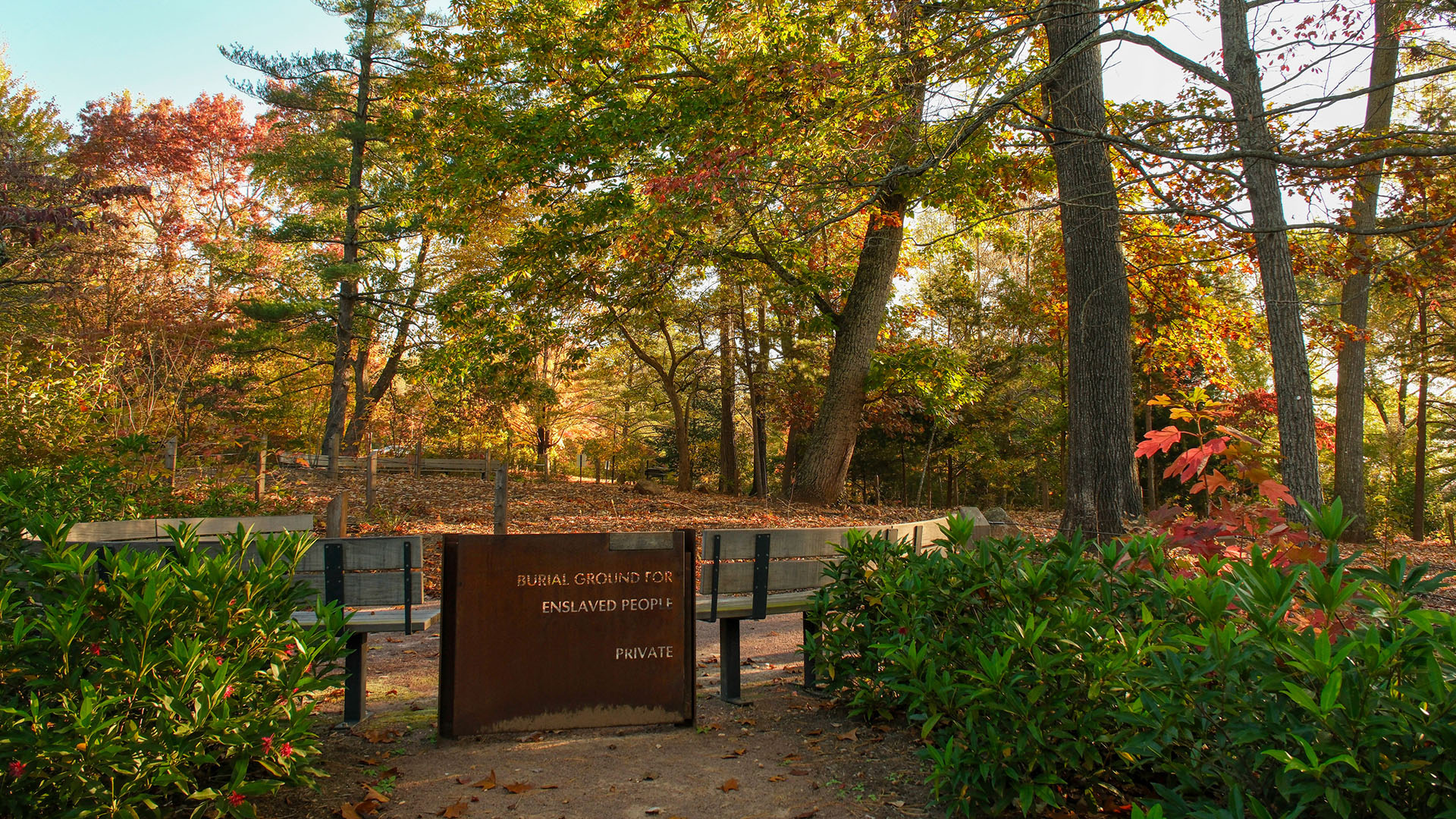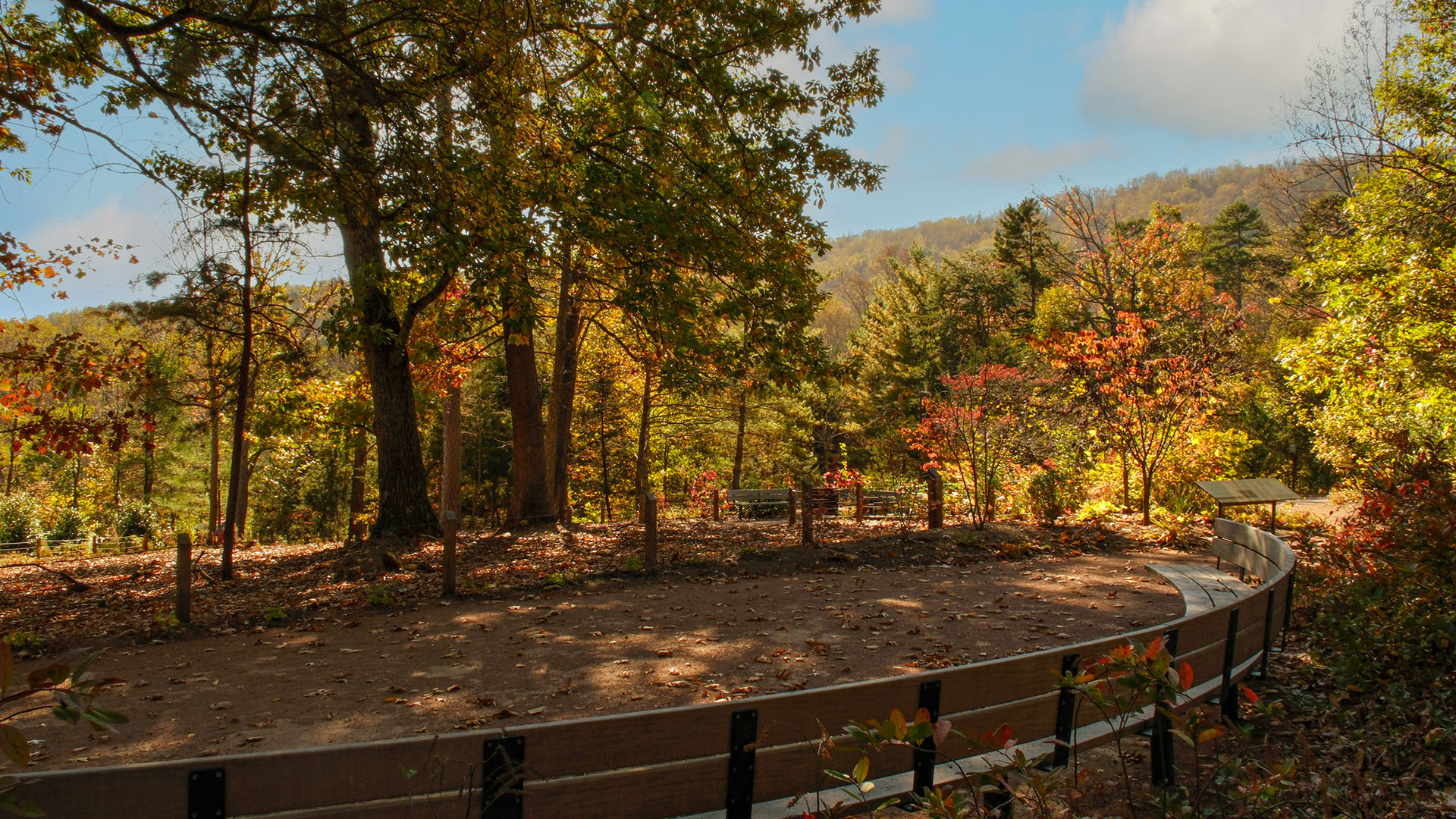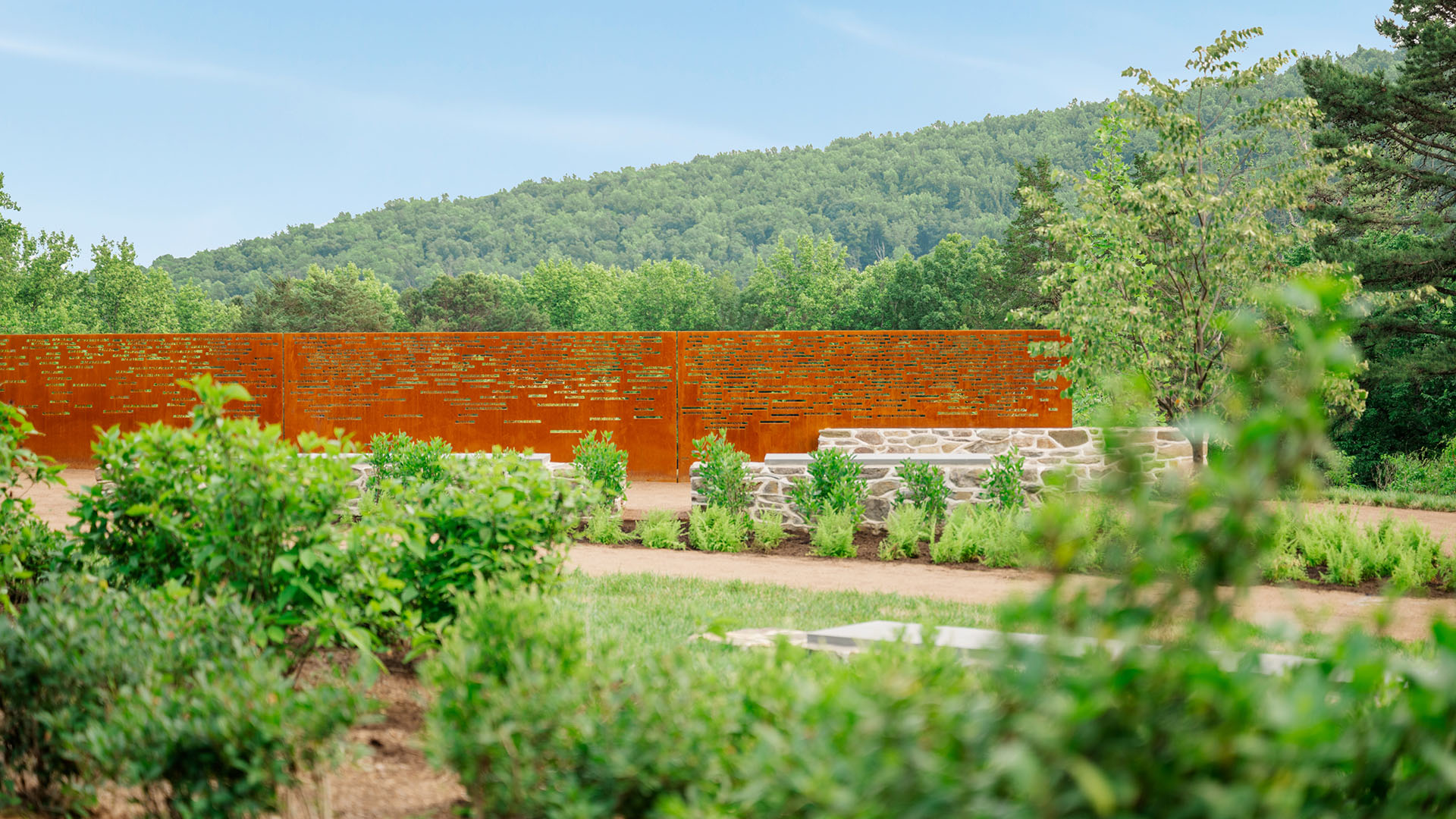Monticello Burial Ground for Enslaved Persons / Contemplative Site
Located at the end of what was once the industrial hub of the Monticello plantation, this Contemplative Site honors the plantation’s enslaved population, while providing strong connections to the Burial Ground for Enslaved People at Monticello’s David M. Rubenstein Visitor Center.
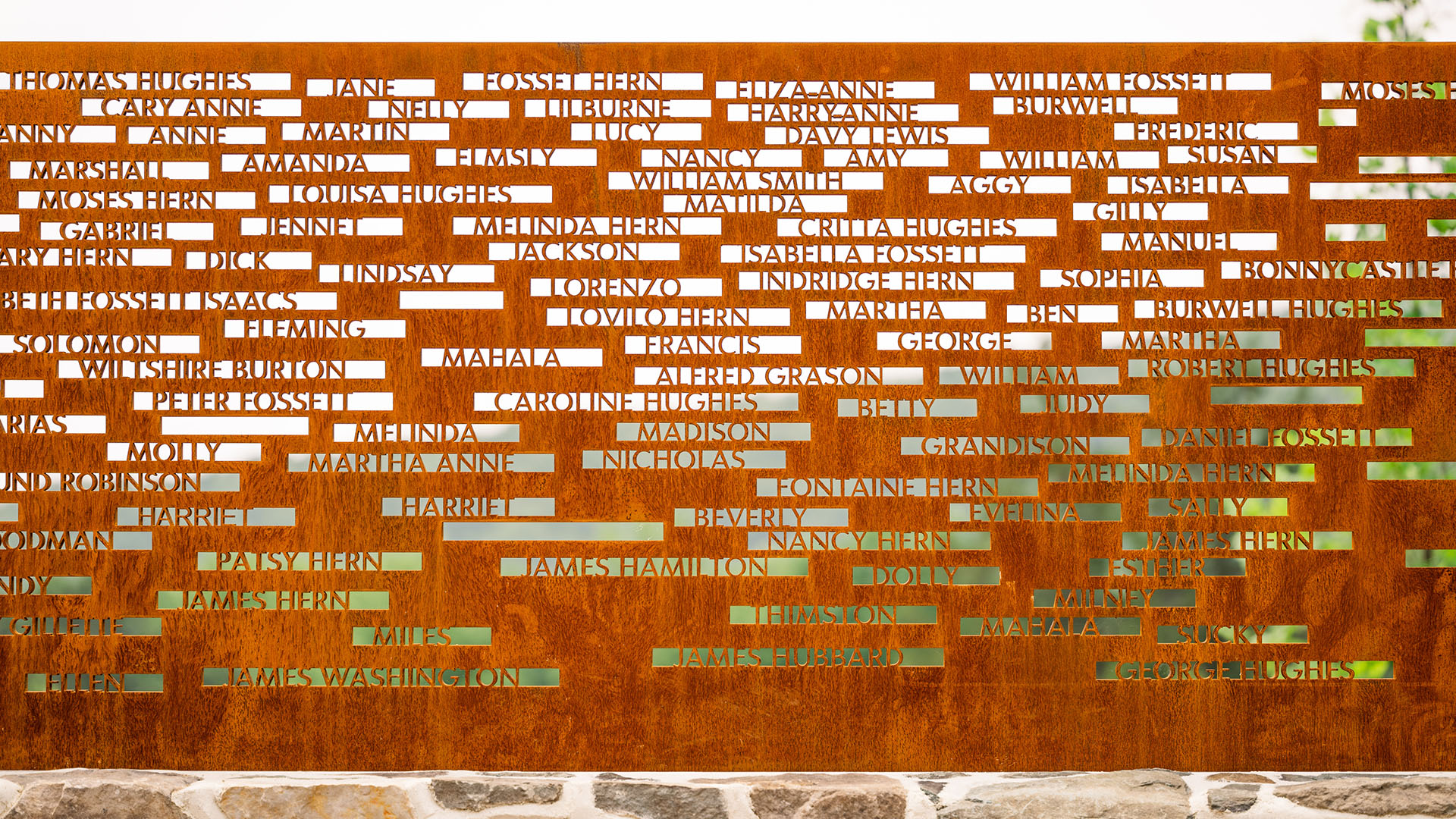
The Challenge
The Burial Ground is centrally located near the Visitor Center where most begin their journey, yet it was easily overlooked. The simple, rustic space was surrounded unfortunately by landscaped parking lots. The Burial Ground also lacked the headstones and formal landscapes characteristic of more traditional cemeteries. Therefore, a key challenge was to restore the Burial Ground, giving it greater presence, ensuring it would no longer be bypassed by those rushing to the Visitor Center, instead becoming an essential part of their experience at Monticello.
The Foundation acknowledged this unfortunate condition and began to remedy it with the restoration project. Key to this was the preservation and enhancement of the site’s serenity by repurposing, regrading, and reforesting an existing underused roadway. This new visual buffer created a deeper, denser, green space around the perimeter of the Burial Ground and allowed for a new pathway to encircle it, revealing new perspectives of the site while offering moments of peace and solace for both visitors and descendants.
While the Burial Ground is the final resting place for approximately 40 enslaved people, Monticello lacked a place where visitors could process the sometimes difficult information on the tours, and begin to grasp the full scale of slavery on the Mountaintop and those entangled in it. A central challenge therefore was to communicate this and to stimulate introspection and conversation.
The Site focuses on a 60-foot-long Cor-Ten steel wall, subtly curved and etched with the names of those known to have been enslaved by Jefferson, weathering to show the passage of time. Blank spaces allow for additional names to be added should research reveal new information. The earthy, rich color of Cor-Ten nods to the red clayey soils of the Mountaintop. And the staining properties inherent to the material—often difficult to erase fully—allude to slavery in the United States, an intractable stain that remains a part of the national identity.
Project Vision
In 2022 and 2023, the Thomas Jefferson Foundation created two new site installations at Monticello, the plantation home of Thomas Jefferson. Together, the Burial Ground for Enslaved People and the Contemplative Site recognize the centrality of the enslaved to the story of Monticello, to their descendants, and to Jefferson himself. With these two distinct yet interrelated spaces, the Foundation sought to stimulate dialogue, engagement, and introspection, offering an opportunity for staff and visitors to pause and reflect on the lives of the 607 enslaved women, men and children who made Monticello possible.
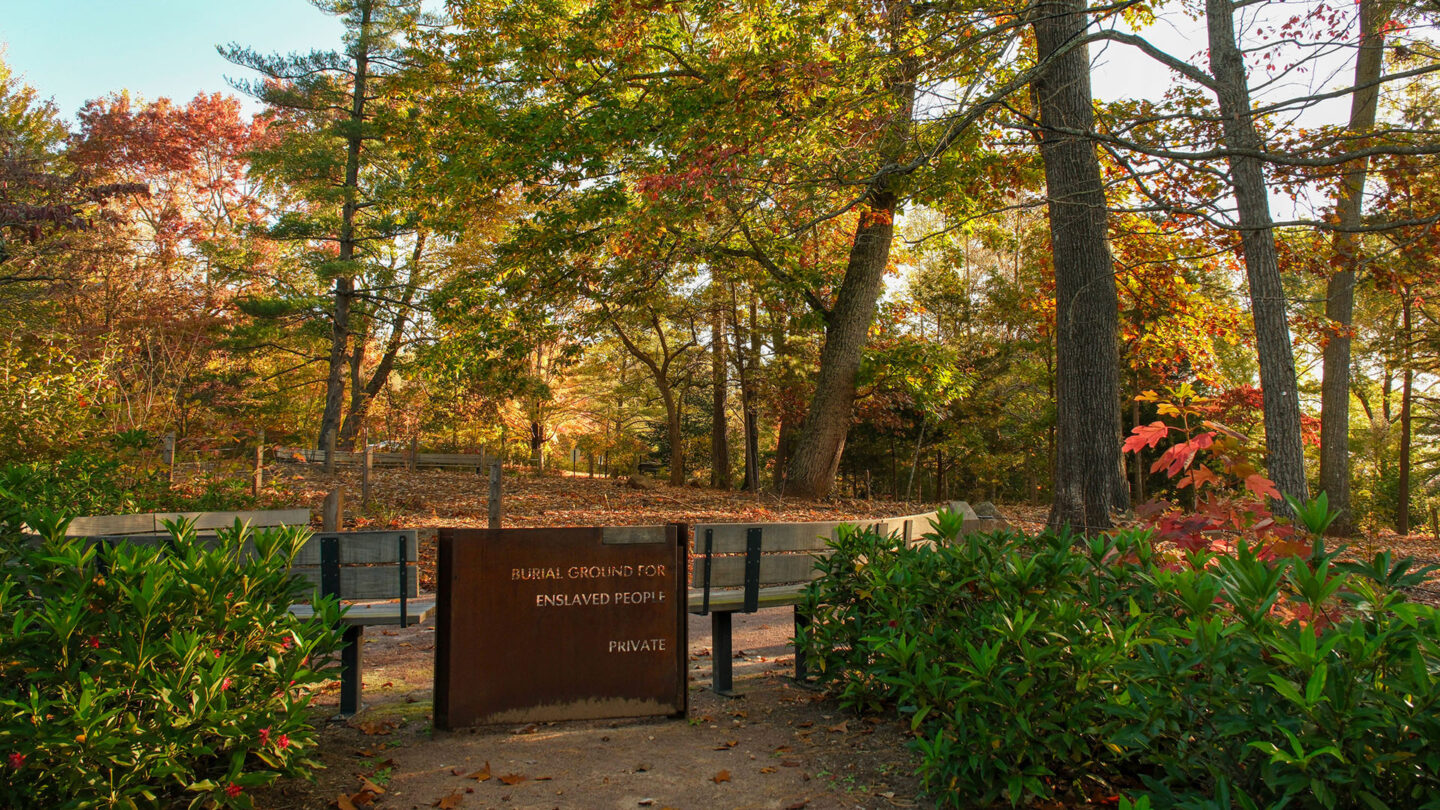
With an expanded landscaped buffer, the restored Burial Ground for Enslaved Persons is a quiet, intimate place, an opportunity for descendants of the enslaved to reflect and honor ancestors.
David Lepage
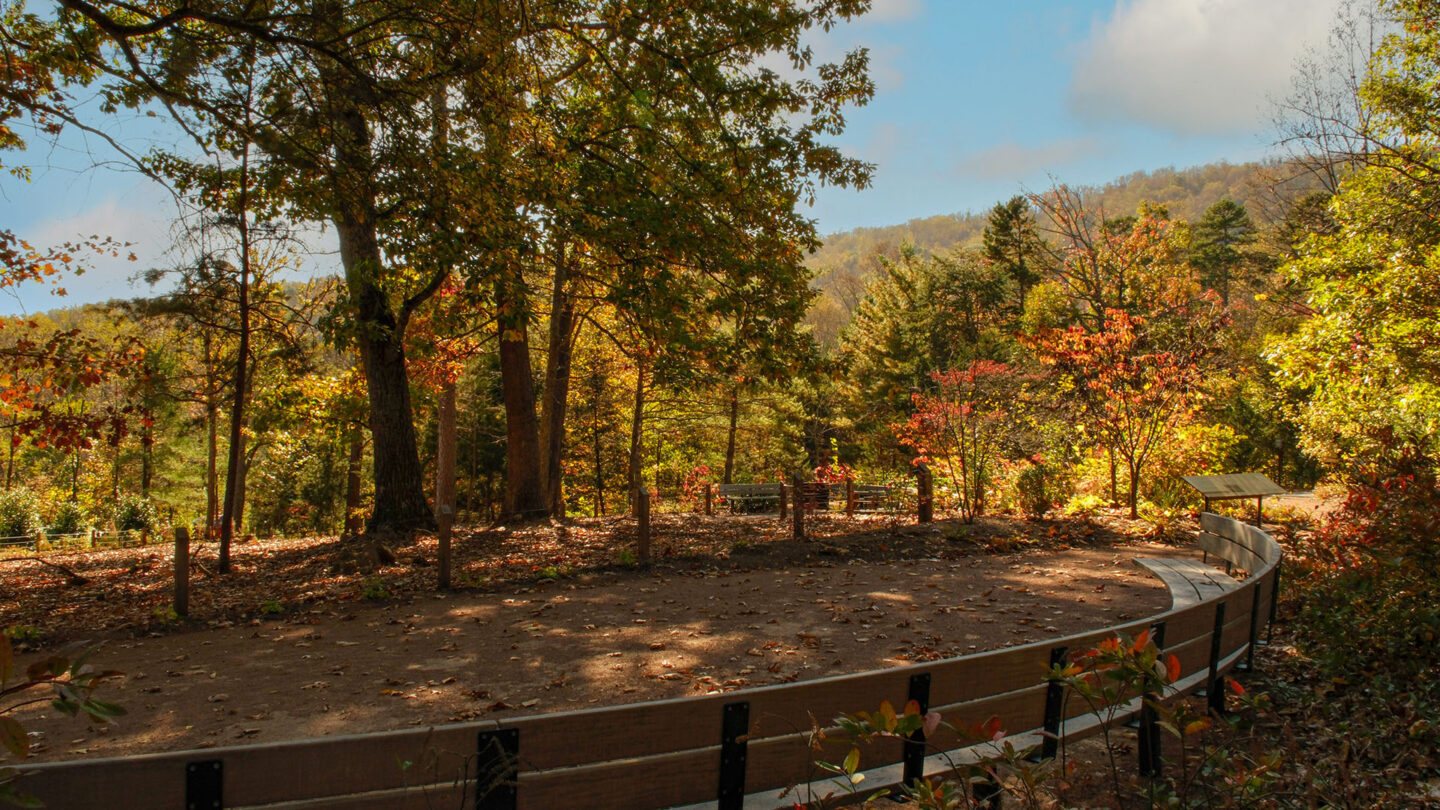
The Burial Ground, with new interpretive signage, provides space for visitors to pause, reflect and gain a deeper understanding of the centrality of the enslaved to the story of Monticello.
David Lepage
Design + Execution
The design process began with and was informed throughout by extensive descendant engagement, a powerful moment coming when a descendant brought a centuries-old brick fragment marked by three distinct concave indentations. When asked to place fingers into these grooves, it revealed that they were much too small to be made by an adult hand and instead were by that of a child.This simple demonstration that enslaved children were tasked with creating many of the bricks used at Monticello underscored the importance of the project—to ensure that the lives of those who labored were not forgotten. Through a phased, research-driven process, the design team began by conducting detailed site analyses—mapping existing grade, vegetation and archaeology using lidar and archival plans—to locate the recreated Jefferson-era “1-in-10” road and ensure no burials would be disturbed. Parallel workshops with descendant families, landscape historians, and Monticello staff informed every decision, from the curvature of the 60-foot Cor-Ten wall to the spacing of each name. Prototypes of the weathering steel were tested on-site to calibrate patina performance against Virginia’s seasonal rainfall; once approved, the full-scale panels were precision water-jet cut off-site, allowing for blank apertures that accommodate future research discoveries.
Construction was carefully sequenced to maintain visitor access and preserve serenity. After selective demolition of an underused roadway and removal of eight adjacent parking stalls, crews regraded and reforested the Burial Ground’s perimeter, establishing a living buffer of native hardwoods and understory plantings. A meandering pathway—composed of compacted gravel and subtle edge restraint—was then installed to encircle both sites, guiding visitors in a contemplative loop. Customized fieldstone benches capped in bluestone, along with bespoke railings and a descendant-only gate, were set on poured-in-place concrete pads; each element was coordinated in BIM to ensure flawless alignment with the wall’s orientation toward the Burial Ground. Final landscaping and low-glare uplighting were completed just weeks before the June 17, 2023 dedication, when descendants gathered to witness the living memorial come to life on the Mountaintop.
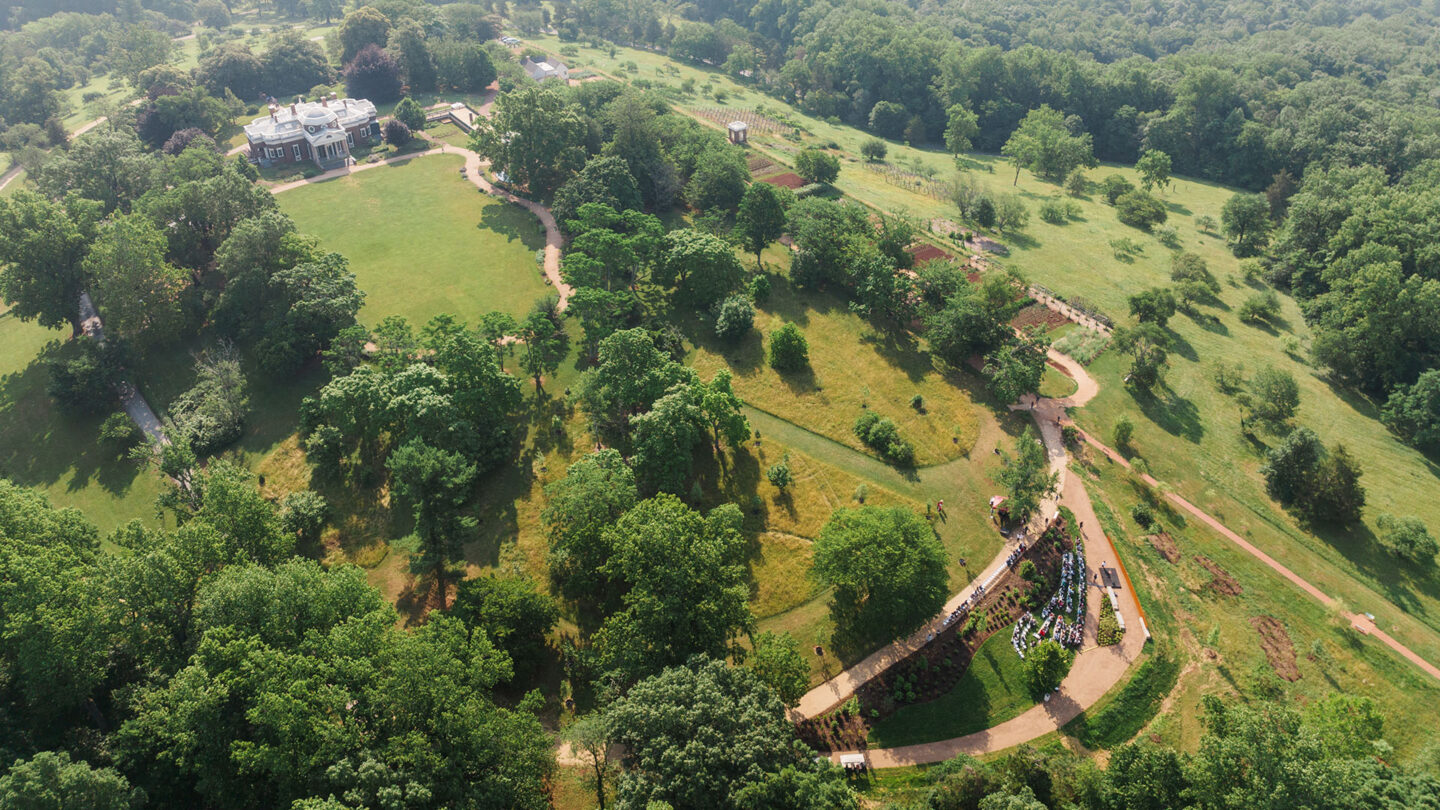
Set in the Blue Ridge Mountains, the Contemplative Site (bottom right) sits in quiet dialogue with Jefferson’s plantation home, Monticello (upper left).
Thomas Jefferson Foundation at Monticello

With a backdrop of Montalto, the Contemplative Site is centered on a 60-foot-long curved, weathered steel wall etched with the names of those known to have been enslaved by Jefferson.
Thomas Jefferson Foundation at Monticello

At the dedication events on Juneteenth 2022 and 2023, descendants, visitors, and staff gathered for solemn ceremonies and listened to the spoken names, honoring the lives of the Enslaved.
Thomas Jefferson Foundation at Monticello
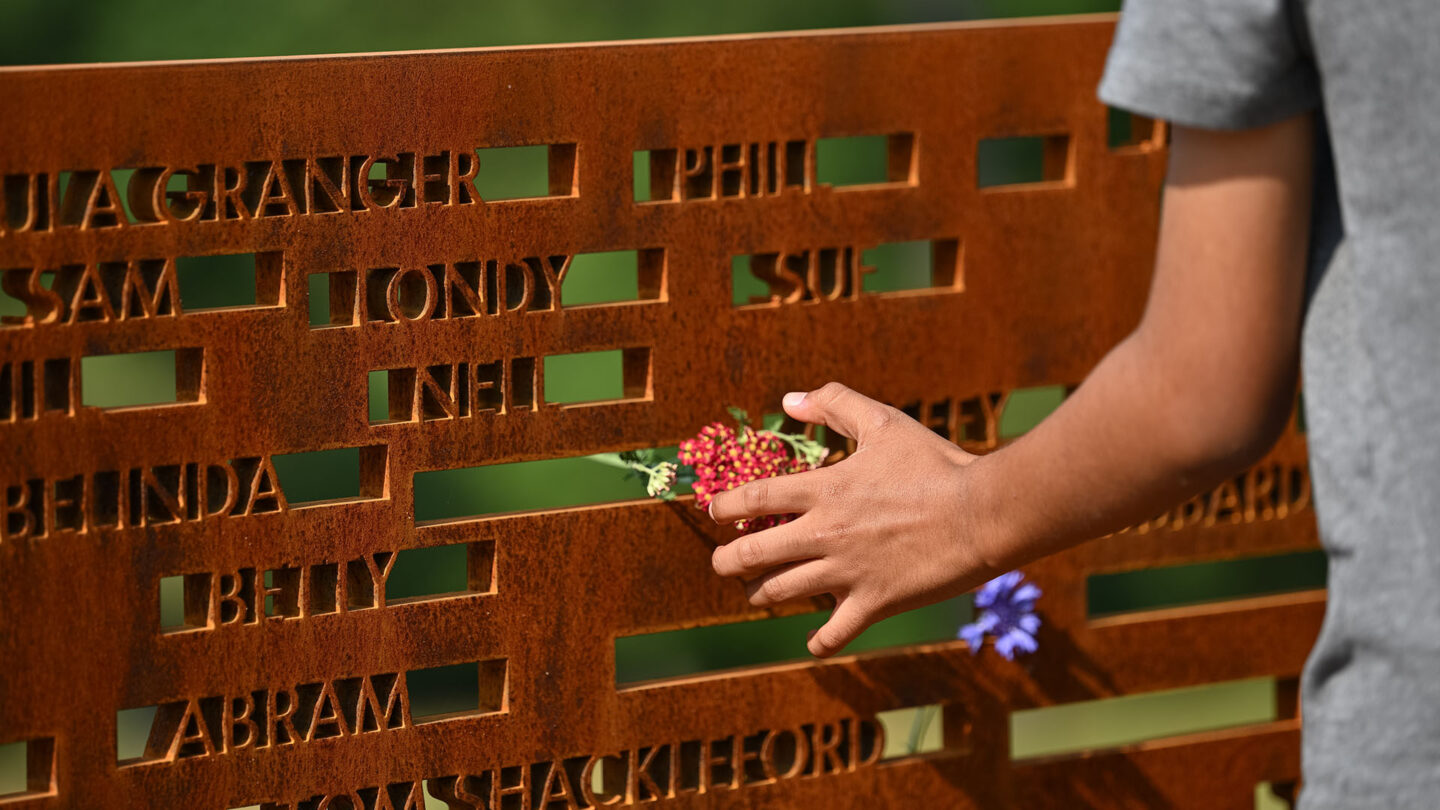
The Cor-Ten steel wall is comprised of five 12-foot-long panels with blank spaces provided to allow for inclusion of additional names should further research reveal new information.
Thomas Jefferson Foundation at Monticello

Solid where the wall rises from the earth, names organized horizontally by date of birth increase in porosity towards the top, creating lightness as they move skyward to the heavens.
David Lepage
Project Details
Acknowledging this story, on the grounds where so many visitors might not expect it, is excellent. The simplicity of the idea — the material, the form, the typography cut into weathered steel — is the strength of it.
This installation reflects the quiet reflection required for the context of the project. The material choice is of particular interest, symbolizing the red clay soil of Virginia that enslaved people toiled in to build the founding institutions of the area. One intriguing element of this project are the gaps in the names, reflecting the gaps in information, of a critical history intentionally erased and forgotten.
Design Team
Peter D. Cook (design principal)
Scott Cryer (principal)
Amanda Abi Kallushi (architect)
Vance Cunningham
Collaborators
Nelson Byrd Woltz (landscape architect)
Shickel Corporation (water-jet cut corten steel)
Timmons Group (civil engineer)
Photo Credits
Thomas Jefferson Foundation; Nelson Byrd Woltz (David Lepage)(photography), Thomas Jefferson Foundation at Monticello (videography)
Open Date
June 2022
More in Public Installation
All Projects-
Read more The Hive

The Hive
The Urban Conga -
Read more Carousel for Companionship
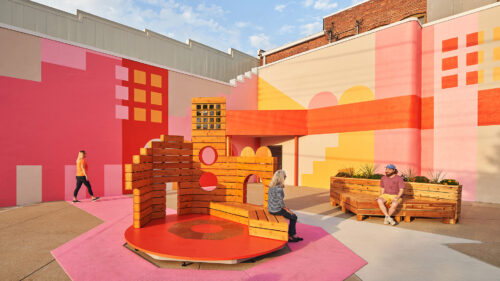
Carousel for Companionship
Could Be Design -
Read more On Tap: The Columbia Tap Trail
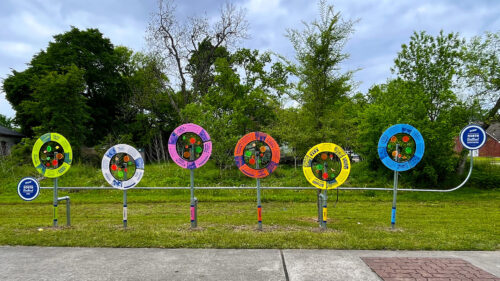
On Tap: The Columbia Tap Trail
University of Houston, Graphic Design, School of Art and Gerald D. Hines College of Architecture and Design -
Read more Washington School for the Deaf Art Gate
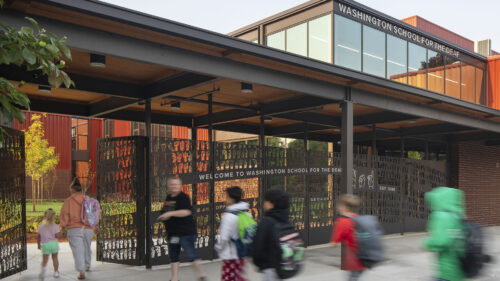
Washington School for the Deaf Art Gate
Mayer/Reed, Inc.
